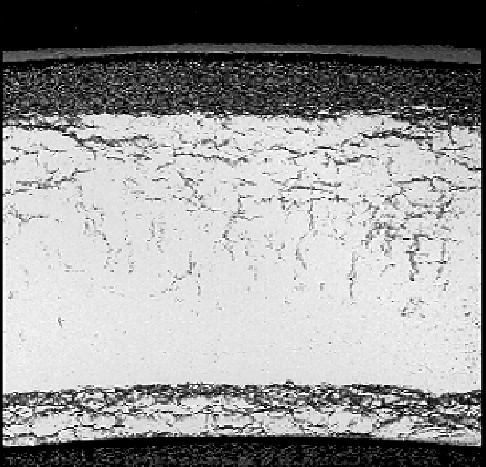Environmental Engineering Reference
In-Depth Information
4.39
Dense hydride rim on the outer side, BWR liner fuel rods with
low Fe and Si Zry-2 cladding exposed at corner position to high heat
fl uxes to 53.5 MWd/kgU with an average hydrogen content of 1600
ppm (Miyashita
et al
., 2007). Copyright 2007 by the American Nuclear
Society, La Grange Park, Illinois.
Hydride distribution in fuel rods having very high heat fl ux can be quite
complicated, as illustrated for an extreme case in Fig. 4.39 for a Zircaloy-2
BWR cladding with a liner of zirconium. A dense hydride rim is seen at the
outer surface (a condition more common in PWR rods than BWR ones), mixed
radial and circumferential in the outer interior, a zone denuded of hydrides on
the inner interior and substantial hydriding of the inner zirconium liner. High
burnup performance of both BWR and PWR rods may be affected by such
hydride distribution. One evaluation is given by Garzarolli
et al
. ( 2010 ).
4.5
Corrosion of zirconium alloys
We proceed here with descriptions of corrosion phenomena, which often limit
the lifetime of core components.
4.5.1 Types of corrosion and comparison between
PWRs and BWRs
Corrosion of zirconium alloys used in the core of nuclear power plants (and
the accompanying absorption of hydrogen in the zirconium metal matrix)

Search WWH ::

Custom Search